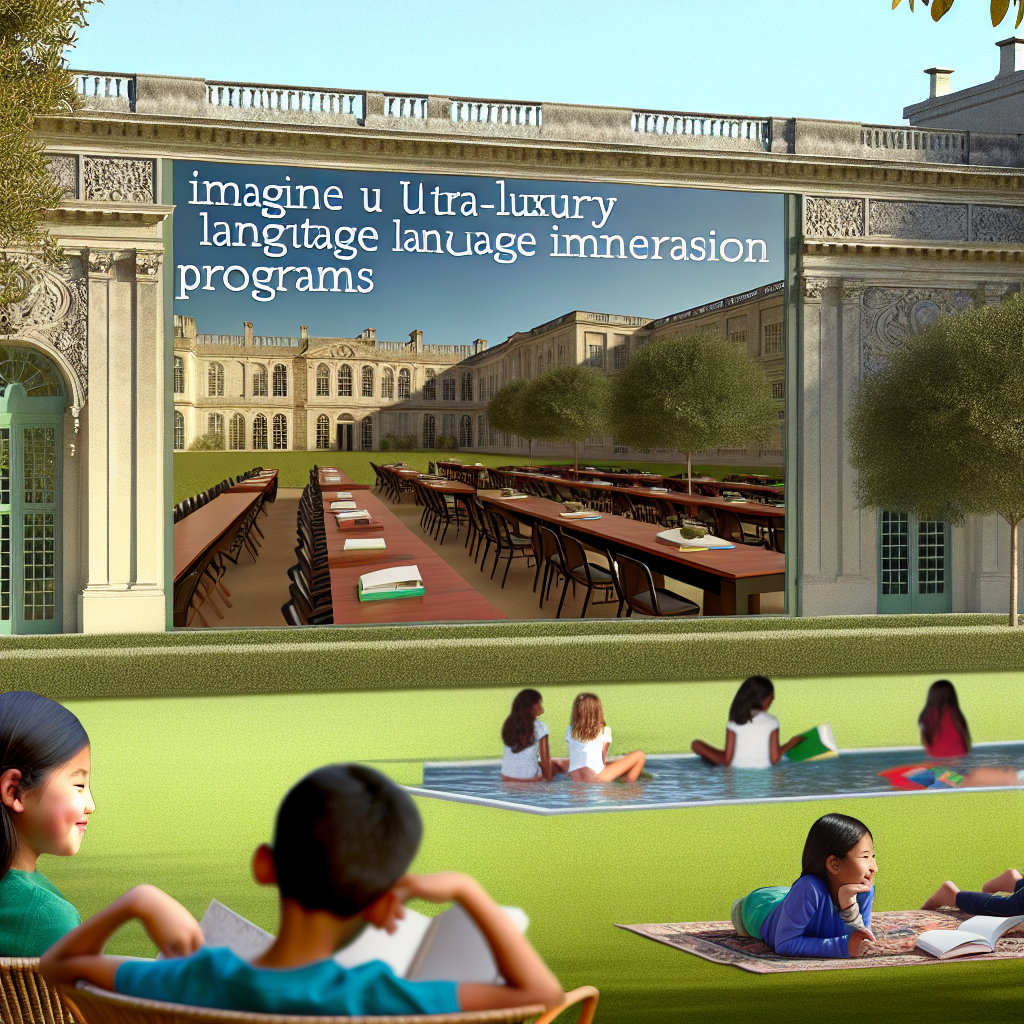Heritage Language Immersion Estates: How Ultra-Luxury Properties Are Becoming Educational Institutions
The Evolution of the Estate: From Luxury Living to Language Learning
Traditionally, the home has been a sanctuary—a place to unwind, gather with family, and enjoy the fruits of success. But as high-net-worth and ultra-high-net-worth families continue to expand their expectations around lifestyle, luxury estates are undergoing a remarkable transformation. Today’s elite properties are no longer just about amenities like infinity pools, wine cellars, and tennis courts.
For discerning global parents, the latest frontier in home innovation is education—specifically, immersive language acquisition embedded within the daily life of the estate. These aren’t language lessons in the traditional sense; we’re talking about full-fledged Heritage Language Immersion Estates.
A Heritage Language Immersion Estate blends the functionality of a private residence with the core principles of language immersion schools, allowing children (and often adults) to organically develop fluency in their family’s ancestral or chosen heritage language—be it Mandarin, Arabic, French, Russian, or even Yoruba. This lifestyle approach is gained not through coursework or digital apps but through everyday living, social engagement, and curated experiences led by native-speaking staff and educators.
For affluent families committed to raising global citizens, language has emerged as a defining pillar of identity and opportunity. Language fluency can offer intellectual and cognitive benefits, but more critically for the next generation, it serves as a bridge to heritage, international business, cultural diplomacy, and familial continuity.
In response to this growing demand, estate designers, educational consultants, and child development strategists are working with luxury real estate developers to create purpose-driven environments that blur the lines between home and school.
Creating Holistic Language Ecosystems in the Home
From live-in multilingual educators and linguistically themed architecture to immersive play-based routines and media libraries engineered for language development, these homes are nuanced ecosystems designed to foster holistic bilingualism or multilingualism.
For parents passionate about embedding a second or third language into their children’s daily experiences, these estates provide an ideal, immersive solution that bypasses the drawbacks of conventional classroom learning or short-term language camps. Everyday activities—such as cooking meals, playing games, listening to music, or celebrating cultural holidays—are transformed into powerful linguistic and cultural learning environments through strategic support and cultural integration.
Moreover, as remote education and hybrid learning models continue to evolve, families now view their primary home or secondary estates as education-forward environments. Add to that the importance of legacy-oriented parenting—the desire to pass down language, culture, and heritage—and it’s no surprise that Heritage Language Immersion Estates are emerging as the next evolution in ultra-luxury, purpose-built living.
The Science Behind the Experience: Language Development Meets Luxury
The implementation of language immersion into home environments is more than a trend—it’s a data-backed innovation anchoring itself in developmental neuroscience, child psychology, and global education research.
Multiple academic and clinical studies have revealed the cognitive and emotional advantages of raising bilingual or multilingual children, particularly through early and immersive language exposure.
One landmark study from the University of Washington’s Institute for Learning & Brain Sciences revealed that children exposed to a second language from infancy show advanced executive function abilities—such as better problem-solving, decision-making, and multitasking skills—compared to monolingual peers. The same study emphasized that these benefits are more pronounced when the language exposure mimics natural social learning environments, such as at home or during play, rather than classroom instruction.
Furthermore, the American Academy of Pediatrics recognizes that language acquisition in home settings can lead to stronger familial bonds and cultural continuity. This is especially true for expatriate or third-culture families wanting to ground their children in their ethnic or linguistic identities despite living abroad or in multilingual societies.
The Global Education Monitoring Report by UNESCO supports immersive learning, stating that “education through the mother tongue is often crucial in achieving quality education” and that long-term exposure to heritage language at home significantly boosts academic performance and social integration skills.
Emotional Intelligence, Cultural Identity, and a Sense of Belonging
Even from a psychological standpoint, students who engage with a heritage language on a daily, experiential level tend to exhibit increased self-esteem, higher emotional intelligence, and a stronger sense of identity.
According to research from the U.S. National Library of Medicine, maintaining and nurturing a heritage language plays a crucial role in mental health and identity development. Multilingual children often develop cross-cultural empathy, confidence in diverse social settings, and emotional resilience.
Private estate designers are increasingly bringing in clinical linguists and early-childhood pedagogues as consultants when creating layouts for Heritage Language Immersion Estates. This ensures fluid integration across sensory development, spatial design, and cognitive engagement. Design elements may include:
- Dedicated immersion playrooms with cultural themes
- Media centers curated with age-appropriate language content
- Custom daily programming led by multilingual caregivers and educators
- Interactive storytelling spaces for heritage folklore and narratives
All of these features combine to turn everyday moments into language-building milestones, making heritage learning both joyful and seamless.
The Future of Luxury Living: Intentional Legacy Through Language
As parenting models and luxury living standards converge around the idea of intentional legacy-building, Heritage Language Immersion Estates are defining a new chapter in purposeful estate living. Beyond aesthetics and extravagance, these innovative homes embed generational values, global fluency, and cultural relevance into the very foundation of everyday life—creating not only a home but a lifelong educational experience.
References
- University of Washington Institute for Learning & Brain Sciences – “Being Bilingual Changes Brain Structure in Children”
- American Academy of Pediatrics – “Language Development: Speech Milestones and Disorders”
- UNESCO Global Education Monitoring Report – “Mother-tongue based education is key to inclusion in multilingual societies”
- U.S. National Library of Medicine – “The Role of Heritage Language in Identity Development and Mental Health”

Dominic E. is a passionate filmmaker navigating the exciting intersection of art and science. By day, he delves into the complexities of the human body as a full-time medical writer, meticulously translating intricate medical concepts into accessible and engaging narratives. By night, he explores the boundless realm of cinematic storytelling, crafting narratives that evoke emotion and challenge perspectives. Film Student and Full-time Medical Writer for ContentVendor.com




